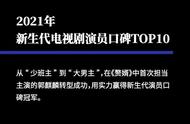这个技术大家也应该非常熟悉了,是在一个特定的训练组当中先达到力竭、随后减轻重量继续训练并又一次达到力竭、再不断重复几次的做法。这种做法的好处是能够提高训练容量和代谢压力。
有实验显示,对于新手训练者(训练年限少于一年)来说,递减组能够较为显著的提高训练后的目标肌厚度【12】;而对于有经验的训练者来说,在训练总量相同的情况下,是否利用递减组技术对增肌幅度并没有显著影响【13】。
总之,在传统的做组方法之上还存在很多促进肌肉增长的技术。有些技术单独使用对新手和老手都能够有效提高增肌效率,有些技术单独使用可能效果并不太好,需要与其他技术结合才能发挥比较好的效果。不管如何,想要提高肌肉实力,就需要持续不断的让身体接受更多新的挑战。满足于当下的训练水平而不想做出任何改变,那么你的进步也就停止了。
参考资料
1、Damas F., Libardi C.A., Ugrinowitsch C. The development of skeletal muscle hypertrophy through resistance training: The role of muscle damage and muscle protein synthesis. Eur. J. Appl. Physiol. 2018;118:485–500. doi: 10.1007/s00421-017-3792-9
2、American College of Sports Medicine American College of Sports Medicine Position Stand Progression models in resistance training for healthy adults. Med. Sci. Sports Exerc. 2009;41:687–708. doi: 10.1249/MSS.0b013e3181915670.
3、Schoenfeld B.J. The mechanisms of muscle hypertrophy and their application to resistance training. J. Strength Cond. Res. 2010;24:2857–2872. doi: 10.1519/JSC.0b013e3181e840f3.
4、American College of Sports Medicine American College of Sports Medicine Position Stand Progression models in resistance training for healthy adults. Med. Sci. Sports Exerc. 2009;41:687–708. doi: 10.1249/MSS.0b013e3181915670.
5、Schoenfeld B.J. Potential Mechanisms for a Role of Metabolic Stress in Hypertrophic Adaptations to Resistance Training. Sports Med. 2013;43:179–194. doi: 10.1007/s40279-013-0017-1.
6、Schoenfeld B.J., Peterson M.D., Ogborn D., Contreras B., Sonmez G.T. Effects of Low- vs. High-Load Resistance Training on Muscle Strength and Hypertrophy in Well-Trained Men. J. Strength Cond. Res. 2015;29:2954–2963. doi: 10.1519/JSC.0000000000000958.
7、English K.L., Loehr J.A., Lee S.M.C., Smith S.M. Early-phase musculoskeletal adaptations to different levels of eccentric resistance after 8 weeks of lower body training. Eur. J. Appl. Physiol. 2014;114:2263–2280. doi: 10.1007/s00421-014-2951-5.
8、Douglas J., Pearson S., Ross A., McGuigan M. Chronic Adaptations to Eccentric Training: A Systematic Review. Sports Med. 2017;47:917–941. doi: 10.1007/s40279-016-0628-4.
9、Kubo K., Komuro T., Ishiguro N., Tsunoda N., Sato Y., Ishii N., Kanehisa H., Fukunaga T. Effects of low-load resistance training with vascular occlusion on the mechanical properties of muscle and tendon. J. Appl. Biomech. 2006;22:112–119. doi: 10.1123/jab.22.2.112.
10、Yasuda T., Ogasawara R., Sakamaki M., Bemben M.G., Abe T. Relationship between limb and trunk muscle hypertrophy following high-intensity resistance training and blood flow-restricted low-intensity resistance training: Effect of BFR training on trunk muscle size. Clin. Physiol. Funct. Imaging. 2011;31:347–351. doi: 10.1111/j.1475-097X.2011.01022.x.
11、Tufano J.J., Conlon J.A., Nimphius S., Brown L.E., Seitz L.B., Williamson B.D., Haff G.G. Maintenance of Velocity and Power with Cluster Sets During High-Volume Back Squats. Int. J. Sport Physiol. 2016;11:885–892. doi: 10.1123/ijspp.2015-0602.
12、Fink J., Schoenfeld B.J., Kikuchi N., Nakazato K. Effects of drop set resistance training on acute stress indicators and long-term muscle hypertrophy and strength. J. Sports Med. Phys. Fit. 2017;58:597–605. doi: 10.23736/S0022-4707.17.06838-4.
13、Angleri V., Ugrinowitsch C., Libardi C.A. Crescent pyramid and drop-set systems do not promote greater strength gains, muscle hypertrophy, and changes on muscle architecture compared with traditional resistance training in well-trained men. Eur. J. Appl. Physiol. 2017;117:359–369. doi: 10.1007/s00421-016-3529-1
,













